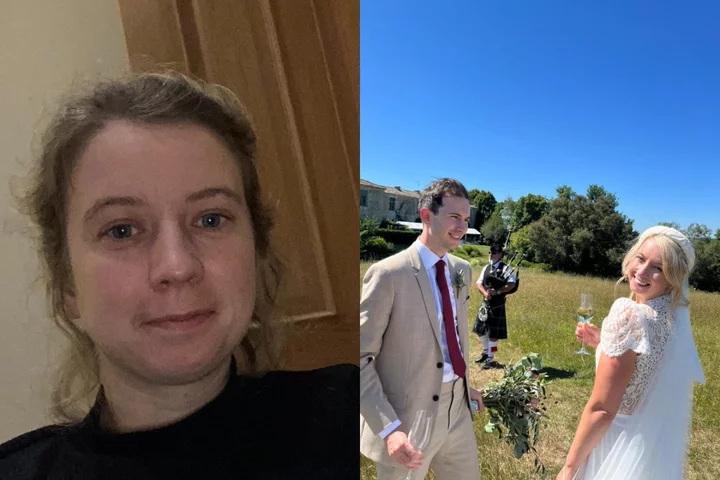
Woman reveals ‘crippling’ condition that almost called off her wedding
A woman who felt she was “trapped in this really dark world” due to her anxiety, causing her to have panic attacks, cancel her hen do, and feel she was “constantly on the verge of having a heart attack”, has said “therapy has allowed (her) to feel like (herself)” again and she has since gone on to marry her best friend who she met at school. Kirsty McKillop, 34, a strategist who lives in Walthamstow, London, said she had experienced anxiety “on and off” throughout her life, but it became all-consuming during the Covid pandemic – particularly after going through a redundancy process at her previous job in PR, which knocked her confidence and made her question her self-worth. She said she felt trapped in this “prison” that she had created in her mind and started “catastrophising” – she thought she would “lose everything in (her) life that she cared about”. “I felt like I was basically being crushed by the dark and being suffocated by it and I couldn’t get out,” she said. Kirsty decided to quit her job to look after her mental health, but then “everything went from bad to worse” as she started to experience debilitating physical symptoms. She would cry every day, vomit, experience heart palpitations, have panic attacks, feel agitated and extremely restless, and lie awake in bed until the morning. At her lowest point, Kirsty said she did not believe that she could get better, and she did not engage in “anything that might help her”. However, with the continued support of her now-husband, Liam, 34, family and friends, she began engaging in therapy from December 2021 – and gradually over time she could “physically feel (her anxiety) lifting”. She has since gone on to get married – something she previously did not think was possible – and go on her honeymoon to South Africa, and she now wishes to give the message that “life without anxiety is possible”. “No matter what level of anxiety you’re feeling, it isn’t something that you have to accept as part of life,” she said. “Whilst it is a natural human response, it’s not something you have to live with, and, going through therapy, it has just completely freed me from those feelings and I’m so much happier.” According to the charity Mind, anxiety is a natural human response when we feel that we are under threat; it can be experienced through our thoughts, feelings, and physical sensations. Kirsty had experienced anxiety at varying stages in her life, but during lockdown, when her job was at risk, her mind was “swamped” with negative and “obsessive” thoughts, with everyday places and situations becoming “bleak and scary and threatening”. While Kirsty did not lose her job, the redundancy process knocked her confidence, and her heightened emotions quickly spiralled into physical symptoms of anxiety. She felt she was in “this constant state of panic” and started “overthinking everything”. “I had really irrational thoughts that I was going to lose everything in my life that I cared about because I was not able to function day to day,” she said. “I think, eventually, it did turn into depression, and then I had quite intrusive thoughts around not wanting to wake up if I did get to sleep. “Not being able to sleep, not being able to eat, being sick, crying, feeling like I was having a heart attack, and feeling terrified of everything was really scary.” Kirsty would lie in bed and try to “disassociate” from her anxiety, but her intrusive thoughts just kept “swirling around in her head”. She then decided to quit her job in September 2021 “to give her the headspace” she felt she needed, but the lack of structure and routine in her life only made her anxiety worse. “It had taken over my head so much that I could not think rationally – everything was like, I’m worried about holding down a job, therefore, I’m not going to be able to pay the mortgage, therefore, I’m going to lose the house, therefore, I’m going to lose my husband and all my friends, and I’m going to end up with nothing,” she explained. “Despite having incredibly supportive friends who would come and just be with me for hours, I still had that fear.” Kirsty remembers a specific conversation where her parents and her then-fiance were discussing the wedding, and she thought: “This is ridiculous, there’s no way I’m going to get married in this state.” By this point, she had started losing consciousness during the day and blacking out, and she had to cancel her hen do. In November 2021, after moving back to her home town in Yorkshire, Kirsty’s family and friends encouraged her to seek professional support, as she was “stuck, trapped, in this completely different place”. Kirsty’s loved ones had looked after her throughout this period and previously suggested she seek help, but she was not willing to engage as she thought “it’s not going to make a difference”. She then started speaking to a therapist who was right for her in December 2021, and Kirsty said she was “pulled out of this horrible world”. Through having sessions once or twice a week, and with cognitive behavioural therapy (CBT), Kirsty said she felt she was “becoming much more rational” as she started to “challenge” her thoughts. The CBT focused on thinking about the facts, rather than “the feelings and the catastrophising” she had been experiencing, to try to “break the cycles of negative thinking”. She said: “When that feeling starts to lift, you think, I can get better, and I want to get better. “It’s not about fighting those thoughts, but accepting them and recognising they’re not facts.” By February 2022, Kirsty started to feel like herself again – she stopped being sick, no longer had panic attacks, and was able to sleep. In April, she started a new job as a strategist, which she now loves, and in July she married Liam and had “an amazing day”. Looking back now, Kirsty said she “dreads to think where she would have been” if she did not start having therapy, and she is beyond grateful for the support she has received from her family and friends. She does not want anyone else to go through the “absolute hell” she has, and wants to encourage more open dialogue and acceptance around mental health and anxiety, as she believes it “shouldn’t define you”. “Anxiety is a natural response, but when it gets to the point where you’re having intrusive thoughts, or it’s affecting you physically, or it’s stopping you from doing things, that’s when it’s not normal and you shouldn’t accept it,” Kirsty explained. “It’s not a state of well or unwell, it’s a state of always making sure you’re looking after yourself because life is always going to throw different challenges at you.” She added: “I enjoy life so much more without letting anxious thoughts spoil my day-to-day life… and therapy has just allowed me to feel like myself and enjoy being myself.” Kirsty is one of many who have offered quotes to inform and create a striking collection of AI art to shine a light on anxiety symptoms. The artwork, from the British Association for Counselling and Psychotherapy (BACP), has been installed outside London Waterloo – for more information, visit www.bacp.co.uk/anxietyis. Read More I was a child with mental health problems. Nothing excuses the way I was treated Mum suffered panic attacks for 30 years due to unusual phobia ‘I spent too much money on your wedding’: Musician calls out married friend for flirting with other women Charity boss speaks out over ‘traumatic’ encounter with royal aide Ukraine war’s heaviest fight rages in east - follow live
2023-05-23 19:49
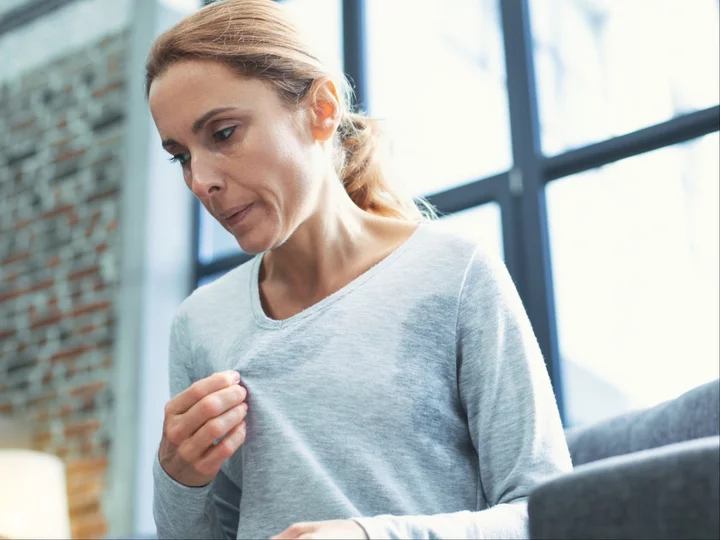
What is fezolinetant? The non-hormonal menopause treatment drug explained
The menopause treatment fezolinetant has been predicted as a “gamechanger” by experts for thousands of women who suffer from hot flushes. The drug, which is the first non-hormonal menopause treatment, was recently approved by America’s FDA. Experts are predicting it could be transformative for women for whom hormone replacement drugs (HRT) are not suitable. The drug was licensed in the US on 12 May and could be approved for use in the UK by the end of the year. According to a British Menopause Society survey, 79 per cent of women aged 45 to 65 experienced hot flushes as a result of their menopause transition, while 10 to 20 per cent describe the hot flushes as “near intolerable”. Here’s everything you need to know about fezolinetant: What is it used to treat? It works to target the menopause symptom of hot flushes. The drug that has been approved by the FDA is made by pharmaceutical company Astella, which advises patients to take one 45-milligram of its VEZOAH (fezolinetant) pill orally, once a day. A large clinical trial of fezolinetant published earlier this year revealed that, after 12 weeks of use, it reduced the frequency of hot flushes by about 60 per cent in women with moderate or severe symptoms, in comparison to a 45 per cent reduction in those who received a placebo. Women involved in the trial also said the drug reduced the severity of hot flushes and improved the quality of their sleep. How does it work? It works by blocking a brain protein called neurokinin-3, which plays a unique role in regulating body temperature in menopausal women. Respondents of the trial have said that the effects of the drug was experienced after taking the first tablet. By comparison, HRT, taken to alleviate menopausal symptoms, replaces the oestrogen that you lose during the menopause transition, either alone or in combination with a progestogen What are the side effects? According to the FDA, the most common side effects are abdominal pain, diarrhoea, insomnia, back pain, hot flush and elevated hepatic transaminases. What have experts said about it? “This is going to be a completely blockbuster drug,” said Prof Waljit Dhillo, an endocrinologist at Imperial College London who led a trial for the drug in 2017 toldThe Guardian. “It’s like a switch. Within a day or two the flushes go away. It’s unbelievable how well these drugs work. It’s going to be completely game changing for a lot of women.” Read More Adenomyosis: 5 things you need to know about the ‘evil twin sister’ of endometriosis ‘Suddenly, I saw Dad again’: The radical technology helping those living with dementia Naga Munchetty reveals womb condition adenomyosis: ‘I live every day on painkillers’
2023-05-22 21:29
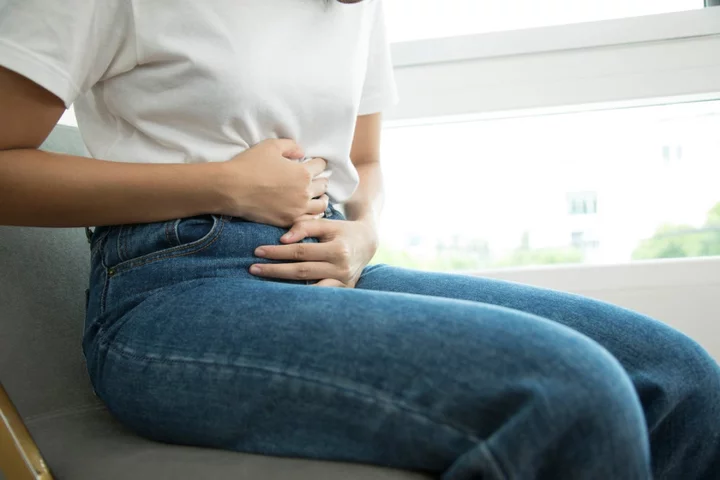
Adenomyosis: 5 things you need to know about the ‘evil twin sister’ of endometriosis
Despite increasing public awareness of endometriosis, with celebrity figureheads including Lena Dunham and Molly Mae, the condition’s ‘evil twin sister’, adenomyosis, remains neglected. While the NHS has an entire webpage which explains what endometriosis is, there is currently no equivalent for its sister condition. Read on for five things you should know. It’s not the same as endometriosis Both endometriosis and adenomyosis occur when the lining of the uterus (known as the endometrium) grows out of place, but there are major differences between the two. In endometriosis, the rogue tissue invades areas outside of the uterus. While the extent of the growth varies from patient to patient, it can affect areas such as the bladder, bowel, ovaries, and even the lungs. Adenomyosis, on the other hand, causes the rogue tissue to bury inside the muscular wall of the uterus. It’s possible to suffer from both conditions at the same time. Symptoms include bloating, heavy periods, and pelvic pain Thanks to the invasive endometrial growth, adenomyosis is characterised by an enlarged uterus. During menstruation, the embedded tissue swells and bleeds, typically causing a variety of symptoms (although some women are asymptomatic). According to a patient leaflet published by University College Hospital, sufferers commonly have painful and irregular periods, with more than half experiencing heavy bleeding. Chronic pre-menstrual pain, and feelings of heaviness and discomfort in the pelvis are among other possible symptoms. Less frequently, adenomyosis can cause bloating, pain during intercourse, and pain related to bowel movements. All symptoms should stop after the menopause. It affects 1 in 10 women The condition is believed to affect 10 per cent of women in the UK. That makes it just as prevalent as endometriosis, although it’s more common in women between the ages of 40-50, and those who have been pregnant before. While the cause of the condition is not known, UCH says that “genetics and some hormones may play a role”. In terms of long-term effects, the North Bristol NHS trust says that adenomyosis does not appear to decrease the chance of pregnancy, however it has been linked to an increased risk of miscarriage and premature birth. Treatment options are limited For women with mild symptoms, trying to get pregnant, or nearing menopause, the North Bristol trust says that treatment may not be necessary, but for those seeking relief from symptoms, it recommends medication to reduce pain and bleeding, and hormonal interventions such as the contraceptive pill. The only “cure” is a surgical procedure involving the removal of the womb (hysterectomy), although this is a last resort intervention. The Bristol-based trust also offers an alternative surgery which involves blocking the blood supply to the endometrial growth, forcing it to shrink, but neither procedure is advisable for women who want to get pregnant in the future. It can take years to diagnose The condition is typically diagnosed using MRI and ultrasound scans, but the NHS says that adenomyosis can take “a long time, even years, to diagnose” because “symptoms and severity can vary between women”. The frequent dismissal of women’s gynaecological symptoms means that signs of adenomyosis may be conflated with ‘normal’ menstruation, or even other conditions such as endometriosis. Anecdotal reports of sufferers suggest that misdiagnosis is common. Gabrielle Union, one of the only celebrities to have publicly identified as having the condition, suspects her condition went undiagnosed for years. Speaking at a conference in 2019, Union explained: “The gag is I had [adenomyosis] in my early twenties, and instead of someone diagnosing me they were like ‘Oh you have periods that last nine or 10 days and you’re bleeding through overnight pads? Not a mere inconvenience... perhaps there’s something more there.’” Earlier this year, the charity Tommy’s reported that the condition might be “underdiagnosed” after a review of existing studies found that “mild” cases could be missed by clinicians using current diagnostic methods. “There should be training for clinicians and sonographers to diagnose adenomyosis using a standardised criteria,” said Dr Ishita Mishra, leader of the review. “Being able to identify this condition using a uniform set of criteria would then help give us a true picture of the numbers affected, and better understanding of the impact of this condition,” Mishra explained. If you have any health concerns, you should always contact your GP in the first instance. There is also information available via NHS Scotland or Endometriosis UK. Read More Lena Dunham marks five years of sobriety: ‘Happiest of my time on earth’ ‘Some days things just do not work’: What happens when your smear test doesn’t go smoothly? Woman’s warning after terminal cancer mistaken for heavy periods 5 things you need to know about adenomyosis, the ‘evil twin sister’ of endometriosis Woman’s warning after lip filler left her unable to close mouth ‘Suddenly, I saw Dad again’: The radical tech helping those living with dementia
2023-05-22 19:45
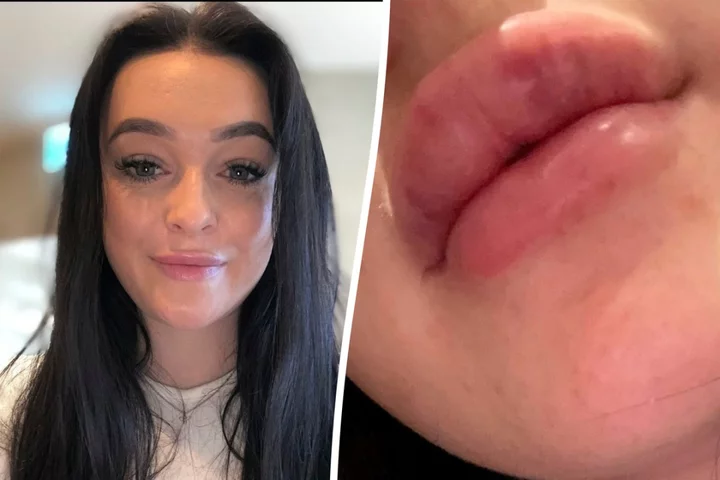
Woman’s warning after lip filler left her unable to close mouth
A woman horrified after lip filler left her unable to close her mouth has urged others to “do their research” before getting cosmetic surgery. Harriet Green, 23, wanted plumper lips after being influenced by videos on TikTok and influencers from Love Island, and went to a salon to get 1.1ml of filler in December 2022. Immediately after the procedure, which entailed a substance being injected into her face, Harriet’s lips started to swell up and bruise but she claims she was assured it was normal and they would go down within weeks. But three months later, her lips were still swollen and Harriet claims she was left with two painful lumps in her lips and unable to properly close her mouth. Harriet had to undergo three corrective procedures, costing £700 in total, to get her lips back to normal. Harriet, a council worker, from Acle, Norfolk, said: “This was the first time I had anything done. “On the way to my appointment, the woman at the salon told me to numb my own lips which now I realise you should not do. “When I was getting my lips done, it was painful but at that time I didn’t realise it is only painful when not done correctly. “Straight after they were very sore and started to bruise. “After all the bruising had gone, I had two hard lumps on my lip - one on the left and one on the right. “It made me feel so much more self-conscious - it was painful and uncomfortable.” Harriet got her lips done in December 2022 and paid £100 for 1.1ml of filler. After the procedure, Harriet thanked the aesthetics practitioner and headed home but started experiencing swelling and bruising on her lips - which she originally thought was standard. Harriet said: “I was assured that the bruising was normal, and it would go down. “But, after all the swelling and bruising had gone, I was left with two hard lumps. “I stopped going to the woman as I was annoyed, and people close to me started commenting on how my lips didn’t look good. “They said they could see unevenness in my lips and could see two lumps on the top tip. “I’d wake up in the mornings and my lips would be swollen.” Harriet found Dr Raja - a GP who runs her own aesthetics clinic in Norwich and underwent three corrective procedures - used to tissue to dissolve any hyaluronic acid-based filler - costing £700. Harriet said: “I had to get my lips dissolved three times as too much filler was put in and it was injected into the wrong place. “I had to go back three times before she could add new filler to my lips. “I have been lucky, don’t get me wrong, I still have lumps in my mouth, but people have had it a lot worse. “After getting my lips done it made me feel so much more self-conscious, it is painful and uncomfortable. “But now you can’t even tell I have had them done as I have had them done properly.” Originally, Harriet was injected with 1.1 mil and Dr Raja inserted 0.6 mil into her lips the second time around. Harriet said the world of cosmetic surgery is a “minefield” and it has put her off any cosmetic procedure for life. She said: “It is so common nowadays. “I don’t judge people - when you have never had anything done before, you don’t know what you should be looking out for. “Looking for what should go wrong and what should go right. “It is important to research the person, don’t just go off social media pictures like I did. “Look for healed pictures of someone’s lips, not just fresh off the needle as they will look nice and plump straight after.” Harriet believes that social media and reality shows like Love Island play a major role in people wanting to get cosmetic procedures. She said: “I won’t have anything done to my face now, at one point my TikTok was full of jaw filler and Botox which swayed me into wanting to get it done. “It seems like such a normal thing to do now - that is the problem. “Shows like Love Island, all the girls on there have had something done to enhance their look which is not natural. “You don’t really ever see anyone there who is ‘natural’ and not had something done. “It feels more common and appealing to others that if you have filler and botox you are seen as more attractive.” Read More Woman defends picking up ‘$8k’ sofa from New York street Couple with 37-year age gap who met when he was 15 have hopes dashed Eamonn Holmes makes startling claim about Phillip Schofield’s ‘nonsense’ This Morning statement
2023-05-22 18:56
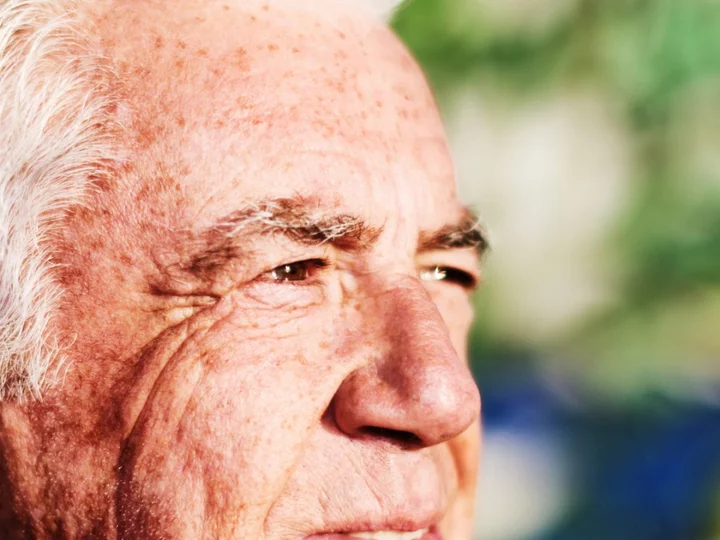
‘Suddenly, I saw Dad again’: The radical technology helping those living with dementia
There is a scene in the 2020 film The Father, starring Anthony Hopkins and Olivia Colman, that is all too familiar for people caring for someone with dementia. In it, Hopkins’ character Anthony struggles to keep up with his daughter Anne’s (Colman) movements. One moment, she is bringing home dinner. The next, she is talking about moving to Paris with a boyfriend he doesn’t like. She’s in his flat. Suddenly, he’s in her flat. Her face shifts – she looks like someone he used to know, then a total stranger. Where is he? When is he? Dementia is a cruel sickness that radiates outwards, seeping into the lives of anyone in its orbit. Patients become lost in a maze of memories. The present day becomes too slippery to hold on to, so many retreat into themselves. Wayfinding – meaning the ability to find one’s way in the world – becomes severely impaired, resulting in anxiety, confusion, and distress that can be very difficult for families and carers to cope with. There is no cure for dementia, and most medical research is focused on finding treatments for diseases that cause dementia, such as Alzheimer’s disease and dementia with Lewy bodies. It’s extremely important work, but there’s also a need for tools that can help those living with dementia as well as their families and carers. As research shows that visual cues can help deliver much-needed aid and relief, a number of small creative companies are stepping in to fill in the gap. Sarah Harrison is the founder of Recognii, the world’s first entertainment DVD made especially for people with moderate to later-stage dementia. The idea for Recognii came about after Harrison began taking care of her father when he was diagnosed with Alzheimer’s in 2015. She and her mother, a former nurse, opted to care for him in their family home in Harrogate, where Sarah also resides. “As the condition progressed, he became very withdrawn,” she recalls. “He couldn’t watch TV or engage himself in his own activities, couldn’t really have a conversation, couldn’t read books anymore because he couldn’t follow the plot.” But amid all the gloom cast by the disease, there’d be breakthrough moments when Sarah saw her father as she always knew him. These moments often came when he watched children’s TV, as the faces of smiling, happy children and brightly coloured graphics grabbed his attention. “It was great, but it was also too childish and didn’t reflect his life,” Sarah says. “I thought, surely there must be something out there that is more simplistic viewing that does reflect adult experiences – but there was absolutely nothing.” An idea began to form. Sarah thought that if she could create engaging short clips of “gentle, joyful stuff” with no storylines, it would bring him some relief from the fog in his mind. “He responded to very bright colours and contrasts, and two-dimensional images, which reflected what we know about the way dementia impacts cognitive and visual processing.” Changes in visual perception occur when the sensory journey between the brain and organs (such as the eyes and ears) gets interrupted, or slows down due to dementia. According to Alzheimer’s UK, the disease can also lead to damage to the eyes or parts of the brain, which can then lead to misperceptions, misidentifications, hallucinations, delusions and time-shifting. Like Anthony’s experience in The Father, time becomes an amorphous thing, which jumps back and forth instead of moving in a linear fashion. As such, older memories can become safer places for dementia patients to revisit. I noticed the iPad gathering dust. She said it wasn’t easy for her to use and she missed getting letters and postcards like she did in the past Famileo, a company that creates “family newspapers” for elderly people – many with dementia – works with families of patients to create personalised hard-copy newspapers that utilise “reminiscence therapy” to help soothe and comfort. “Typically, people with dementia are more likely to remember long-term memories,” explains Tanguy De Gelis, a co-founder of the company. “Famileo includes old photographs of themselves and the family, which stimulates their memory and helps them remember people as they were.” Each photograph included in the newspapers is accompanied by text that helps provide context, so that the reader can easily identify who they’re looking at, as well as their own place in the family in relation to the people in the picture. “Managers and activity coordinators at care homes often tell us that a person’s dementia journey is not linear, that symptoms come and go,” De Gelis continues. “The consistency and reliability of these personalised newspapers allows it to be appreciated even more on the ‘good days’ patients have. It can be very hard for family members to think of things to talk about with an older relative, but the newspaper can be a conversation starter and provide a visual guide for both sides.” Having a physical newspaper is also a boon for many elderly people who struggle with smartphones, tablets and laptops. For De Gelis, it was his grandmother who inspired the idea for Famileo. “I bought my grandma an iPad as a Christmas present so she could keep in touch with the family through our WhatsApp group,” he recalls. “But one day I went to visit her and I noticed the iPad gathering dust. She said it wasn’t easy for her to use and she missed getting letters and postcards like she did in the past.” The slow pace in developing tools for coping with dementia is down to a lack of understanding about the disease, says Dr Emilia Molimpakis, CEO and co-founder of Thymia. For years, patients languished in care homes, their minds deteriorating as families watched on helplessly. “Unfortunately, up until recently, pinpointing clear signs of Alzheimer’s disease relied on invasive and/or expensive medical tests and these often don’t show clear results until the disease has progressed substantially.” But recent developments in medical treatments and in the field of artificial intelligence (AI) have shifted things. Dr Molimpakis’ platform involves building AI-powered tools to improve the speed, accuracy and objectivity of dementia diagnoses. Thymia also uses video game-style activities to test for symptoms of cognitive disorders, she says, such as major depression, anxiety and dementia. “Each game is built around one or more cognitive tests, the results of which show tell-tale signs of symptoms, such as fatigue issues, memory impairment, concentration difficulties and more,” she explains. It does so by using software that analyses “biomarkers” of disease while players complete the activities across three key data streams: voice, video and behavioural measures. By analysing how someone speaks or what facial micro-expressions they make, Thymia’s work-in-progress models have identified symptoms in major depressive disorders with more than 90 per cent accuracy, Dr Molimpakis says. Major improvements in healthcare mean that people are living longer – but in a cruel twist of fate, this means that dementia is becoming ever more prevalent. There are currently more than 55 million people living with dementia globally, and according to Alzheimer’s Disease International, this figure is expected to balloon to 78 million in 2030 and 139 million in 2050. While scientists are working on earlier diagnosis and treatment, the need for coping mechanisms for living with the disease is growing. Harrison remembers how her father would react when she showed him the clips she created. He passed away before the final version of Recognii’s DVD could be launched. “It’s like the clouds would part, just for a few seconds,” she recalls. “Suddenly, I saw Dad again. The moments when you get a glimpse of who they used to be are so precious, because as the disease progresses, you do feel like you are losing them. So having made something that helps bring them back, even temporarily – it’s like a gift.” Read More A One Direction fan claimed she had a brain tumour. Five years after her death, we still need answers ‘Death acceptance brings peace’: Are death doulas the cure for our fear of the end? ‘You always feel like you’ve done something wrong’: Why UK surrogacy laws need a ‘real overhaul’ Jason Manford comforted by fans after announcing death of family member Grandmother praised for refusing to babysit daughter’s newborn for free 7 tips and tricks for hay fever relief
2023-05-22 14:22

7 tips and tricks for hay fever relief
Incessant sneezing, runny, red hot nose, dry itchy eyes and a banging head from wheezing all the time, it’s exhausting! So far it’s really proving to be far from a summer of fun for hay fever sufferers. While we love verdant trees, green grasses (grass pollen being the most common cause of hay fever coming into July) and flower beds to delight our bees and boost our picnic plans, the pollen plants release cause any number of allergic reactions. According to Allergy Ireland, about 25 per cent of all Europeans suffer some type of nose/sinus/chest allergy and this is set to rise to 50 per cent within the next decade Hay fever sufferers should have antihistamines handy and should visit their GP if things get really bad, but in the meantime, here’s how to help ease any irritation, at least a little… 1. Be prepared with an app My Pollen Forecast Pro UK is cited as one of the best apps for tracking the pollen count and your allergens. With a five day forecast, a diary feature to track your allergies and a live pollen map, at least it can help you prep for the great outdoors. Available on the App Store. The Asthma Society of Ireland offers a similar app with a pollen tracker for daily updates on pollen levels around Ireland, including a forecast and predictions for the following day. Plus it’s free. 2. Keep the windows closed Sunshine and blue skies? It’s only natural to want to throw open the windows. Unfortunately, this can let all those nasties in, so try to avoid opening them during peak pollen hours of late morning and late afternoon; and close them at night when there’s a high pollen count too. 3. Vaseline can help in various ways A godsend when you have dry lips, eyelids or cracked skin, Vaseline can also help soothe and protect your nose. Try smearing it inside each nostril to ease any soreness and catch pollen entering the nasal passages. 4. Take a cool shower If your eyes are streaming and you can’t stop sneezing, take refuge under the coolness of cold running water. Not only will it help ease symptoms, but you should wash your hair and change your clothing if you’ve been spending any length of time sitting or working outside. If a shower isn’t practical, put a cold facecloth on your face and lie down for a few minutes. 5. Used tea bags can help ease puffy eyes Make the most of your morning cuppa by putting used tea bags in the fridge and use them as a cold compress to help relieve any swelling and soothe sore, itchy eyes. Cucumber slices can work too. 6. Keep your face mask on Face masks have become so much the norm, you may as well use them to filter out particles of pollen. Especially with summer socials in full swing, if you’re going on a picnic, it’s windy or you have to mow the lawn… eek! 7. Wear wraparound sunglasses Fashionable, sporty and with a fair chance of slightly increased protection against pollen getting in your eyes, a cool pair of wraparound sunnies is your best summer investment – an A-list accessory with benefits. Read More Charity boss speaks out over ‘traumatic’ encounter with royal aide Ukraine war’s heaviest fight rages in east - follow live 7 tips and tricks for hay fever relief Top Films: w/c Saturday, May 27 Soap Guide: w/c Saturday, May 27
2023-05-20 16:20
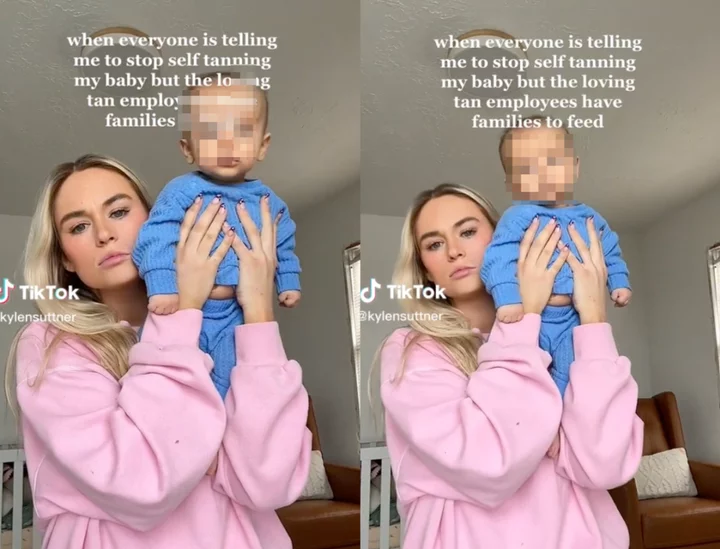
Mother speaks out after video about putting fake tan on baby goes viral
A mother has clarified that a video she made about giving her child a fake tan was a joke, after she faced a backlash over her footage. Kylen Suttner frequently posts videos on TikTok about her partner and their four-month-old child. In one clip, posted in March, she could be seen holding up her baby, while she appeared to have a serious look on her face. She also poked fun at the self-tanning product that she joked she used on her child, in the text over the video. “When everyone is telling me to stop self-tanning my baby but the loving tan employees have families to feed,” she wrote, referring to the popular self-tanning spray, Loving Tan. In the caption, Suttner added: “loving tan is our fave.” As the video quickly went viral, with more than 1m views, it sparked mixed responses. However, Suttner has now clarified that her video was actually a joke. During an interview with New York Post, she said that her baby had jaundice when he was born, which is what made his skin tan. According to the Cleveland Clinic, jaundice “a condition in which the skin, sclera (whites of the eyes) and mucous membranes turn yellow”. “Everyone commented on his colour, so I decided to make a joke about it. I would never actually use self tanner on my baby,” she said. “I feel like most people understood it was a joke. But the few who didn’t were appalled that I would self tan my baby.” Although Suttner made this clarification about her video, the clip was still hit with criticism regarding the use of using self-tanners on babies. “Disgusting! So horrible!” one wrote, while another added; “I can’t tell if this is a joke?” @kylensuttner loving tan is our fav #tan #selftan #selftanning #selftanday #lovingtan #babyboy #newborn #newbornnap #momtime #naptime #newbornbaby #newbornbabyboy #momtok #postpartumbody #postpartumrecovery #postpartum #fourthtrimester #4thtrimester #newmom #newmomtok #postpartumjourney #csectiondelivery #csection #csectionmom #csectionrecovery ♬ original sound - Barney However, many TikTok users poked fun at the video and realised that it was just a joke. “You gotta keep the tan up, it’s a lifestyle Brian,” one quipped in the comments of the video, while another added: “So funny to me that people think you’re being [for real].” A third wrote: “I love this… I wish I had his skin colour.” The Independent has contacted Suttner for comment. According to the National Health Service (NHS), it is generally safe for women to use fake tan creams and lotions while pregnant. But, the site recommends avoiding spray tans, since “the effects of inhaling the spray are not known”. “The active ingredient in fake tan is dihydroxyacetone (DHA),” the medical site notes. “As the DHA isn’t thought to go beyond the outer layer of skin, it isn’t absorbed into the body and can’t harm your baby [during pregnancy].” The medical site also advises against using tanning pills, which are banned in the UK. “They contain large quantities of beta-carotene or canthaxanthin, which are commonly used as food colourings and can be toxic to an unborn baby,” NHS states. Read More Grandmother praised for refusing to babysit daughter’s newborn unless she’s paid $20 an hour Mother shares horrifying moment she found ticks living in her daughter’s ear Stay-at-home mother explains why she relies on full-time nanny Schoolboy almost dies from swallowing magnets for TikTok challenge Woman shares honest review of New York City apartment TikTok mom slammed after making 5-year-old son run in 104 degree heat
2023-05-20 05:21
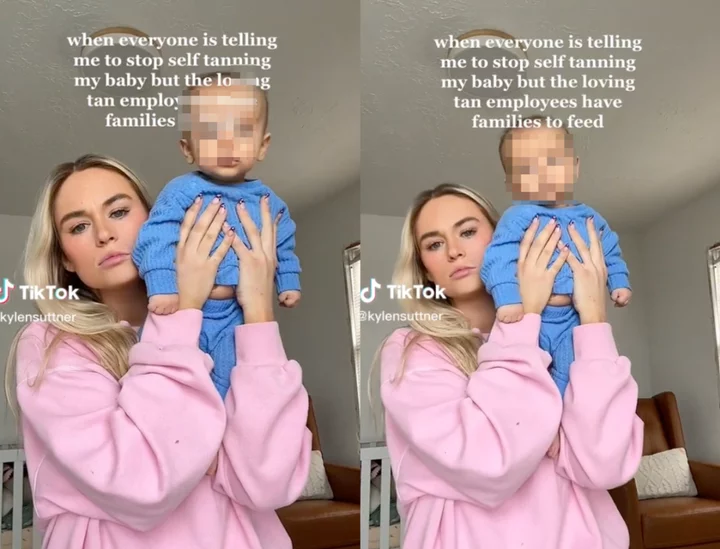
Mother clarifies video about using fake tan on baby was a ‘joke’ after backlash
A mother has clarified that a video she made about giving her child a fake tan was a joke, after she faced a backlash over her footage. Kylen Suttner frequently posts videos on TikTok about her partner and their four-month-old child. In one clip, posted in March, she could be seen holding up her baby, while she appeared to have a serious look on her face. She also poked fun at the self-tanning product that she joked she used on her child, in the text over the video. “When everyone is telling me to stop self-tanning my baby but the loving tan employees have families to feed,” she wrote, referring to the popular self-tanning spray, Loving Tan. In the caption, Suttner added: “loving tan is our fave.” As the video quickly went viral, with more than 1m views, it sparked mixed responses. However, Suttner has now clarified that her video was actually a joke. During an interview with New York Post, she said that her baby’s tan skin is due to his jaundice, “a condition in which the skin, sclera (whites of the eyes) and mucous membranes turn yellow,” according to the Cleveland Clinic. “Everyone commented on his colour, so I decided to make a joke about it. I would never actually use self tanner on my baby,” she said. “I feel like most people understood it was a joke. But the few who didn’t were appalled that I would self tan my baby.” Although Suttner made this clarification about her video, the clip was still hit with criticism regarding the use of using self-tanners on babies. “Disgusting! So horrible!” one wrote, while another added; “I can’t tell if this is a joke?” @kylensuttner loving tan is our fav #tan #selftan #selftanning #selftanday #lovingtan #babyboy #newborn #newbornnap #momtime #naptime #newbornbaby #newbornbabyboy #momtok #postpartumbody #postpartumrecovery #postpartum #fourthtrimester #4thtrimester #newmom #newmomtok #postpartumjourney #csectiondelivery #csection #csectionmom #csectionrecovery ♬ original sound - Barney However, many TikTok users poked fun at the video and realised that it was just a joke. “You gotta keep the tan up, it’s a lifestyle Brian,” one quipped in the comments of the video, while another added: “So funny to me that people think you’re being [for real].” A third wrote: “I love this… I wish I had his skin colour.” The Independent has contacted Suttner for comment. According to the National Health Service (NHS), it is generally safe for women to use fake tan creams and lotions while pregnant. But, the site recommends avoiding spray tans, since “the effects of inhaling the spray are not known”. “The active ingredient in fake tan is dihydroxyacetone (DHA),” the medical site notes. “As the DHA isn’t thought to go beyond the outer layer of skin, it isn’t absorbed into the body and can’t harm your baby [during pregnancy].” The medical site also advises against using tanning pills, which are banned in the UK. “They contain large quantities of beta-carotene or canthaxanthin, which are commonly used as food colourings and can be toxic to an unborn baby,” NHS states. Read More Grandmother praised for refusing to babysit daughter’s newborn unless she’s paid $20 an hour Mother shares horrifying moment she found ticks living in her daughter’s ear Stay-at-home mother explains why she relies on full-time nanny Schoolboy almost dies from swallowing magnets for TikTok challenge Woman shares honest review of New York City apartment TikTok mom slammed after making 5-year-old son run in 104 degree heat
2023-05-20 01:58
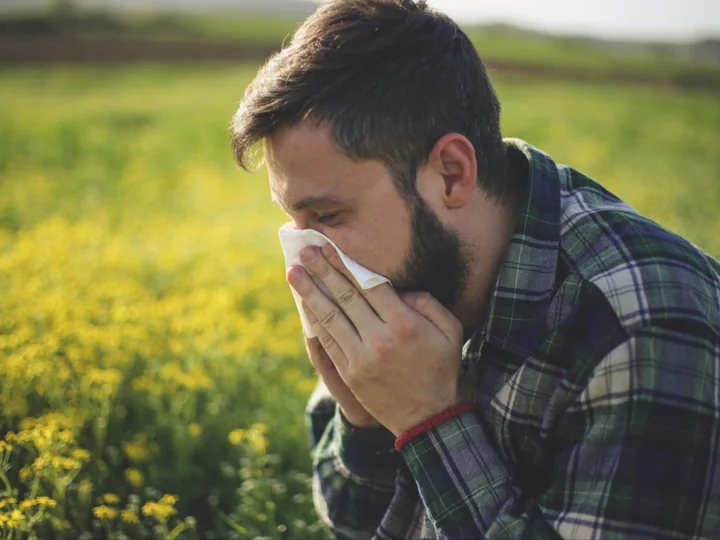
Why do we get hay fever and what are the symptoms?
A runny nose, watery eyes, sneezing, coughing – whatever your hay fever symptoms, it’s no surprise if you’ve had a flare-up recently. During spring, both tree and grass pollen is released into the air. If you’re allergic to the proteins they contain, your nose, eyes, throat and sinuses can become swollen, irritated and inflamed. “Many people are suffering from hay fever just now because the pollen count is high, thanks in part to climate change,” says Dr Nisa Aslam, GP from Typharm’s Skin Life Sciences Foundation. “Plus the pollen season is getting longer.” The immune function plays an important role in an allergic reactions, she explains. “People who suffer from hay fever often have a family history of not just hay fever, but also skin conditions such as eczema or psoriasis, which can often be borne out of problems with the immune system.” The weather can also be a contributing factor in how badly you’re affected. “Some hay fever sufferers may be experiencing a sudden spike in their symptoms a bit earlier than usual, this may be due to the recent prolonged wet and windy weather,” says Claire Nevinson, superintendent pharmacist at Boots. “On a daily basis, rainfall tends to decrease pollen, but over a period of months, intermittent wet days tend to produce a more severe hay fever season overall.” Conditions could be about to get even worse. A recent study by the University of Worcester, published in the Science of The Total Environment journal, warned that it could be one of the worst seasons for birch pollen on record. The severity is due to two things. “Firstly, higher than average temperatures last June, when the pollen is produced, allowed greater potential for high pollen levels,” says Dr Beverley Adams-Groom, senior pollen forecaster at the university. “Secondly, birch trees have a biennial pattern of pollen production, one mild year and one severe year, and this year was already expected to be a high year.” So what can you do if your hay fever is much worse than usual at the moment? The first step is to avoid exposure to the pollen that affects you the most. “Allergens responsible for hay fever include grass pollens and tree pollens [spring and summer], weed pollens and fungal mould spores,” says Dr Aslam. “Watch the daily pollen forecasts. Don’t go outside when the pollen count is high and keep all windows shut.” Preventive medicines can help to reduce symptoms if you know in advance when you’re going to be exposed to pollen. “This can be a steroid nasal spray one to two weeks before symptoms start,” says Dr Aslam. Alternatively, natural nasal sprays “can help to prevent the symptoms of hayfever and other types of allergic rhinitis by forming a protective film in our inner nose, stopping allergens that we breathe in from trying to enter our respiratory system”, she says. Similarly, ointments like Vaseline can act as a pollen trap. “Apply a barrier balm of petroleum jelly around your nose to trap the pollen and help relieve dry and uncomfortable skin from repetitive nose blowing,” Ms Nevinson says. “Shower and change your clothes after you have been outside to wash pollen off and wear wraparound sunglasses to stop pollen getting into your eyes.” Read More Seasonal allergies tips and tricks as pollen count rises What is the link between pollen and eye infections? Hay fever may be mistaken for Covid, warns expert Why do heatwaves in the UK feel hotter than abroad? The startling and grim discoveries unearthed by the climate crisis Earth’s CO2 hits highest recorded level in human history
2023-05-20 01:49
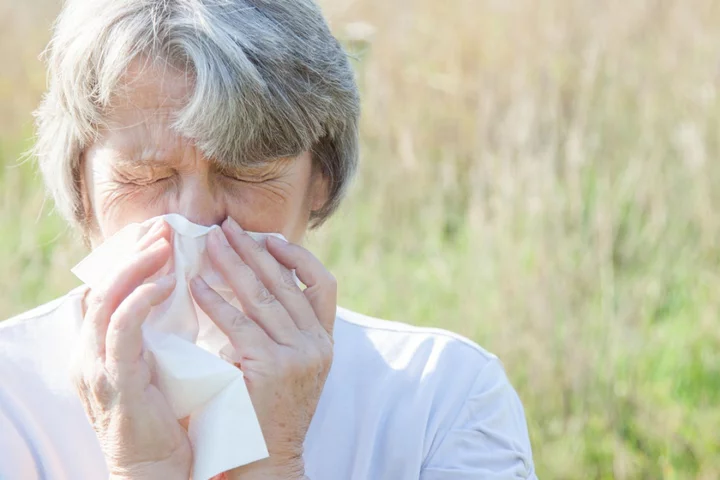
Why is my hay fever so bad at the moment?
A runny nose, watery eyes, sneezing, coughing – whatever your hay fever symptoms, it’s no surprise if you’ve had a flare-up recently. During spring, both tree and grass pollen is released into the air. If you’re allergic to the proteins they contain, your nose, eyes, throat and sinuses can become swollen, irritated and inflamed. “Many people are suffering from hay fever just now because the pollen count is high, thanks in part to climate change,” says Dr Nisa Aslam, GP from Typharm’s Skin Life Sciences Foundation. “Plus the pollen season is getting longer.” The immune function plays an important role in an allergic reactions, she explains. “People who suffer from hay fever often have a family history of not just hay fever, but also skin conditions such as eczema or psoriasis, which can often be borne out of problems with the immune system.” The weather can also be a contributing factor in how badly you’re affected. “Some hay fever sufferers may be experiencing a sudden spike in their symptoms a bit earlier than usual, this may be due to the recent prolonged wet and windy weather,” says Claire Nevinson, superintendent pharmacist at Boots. “On a daily basis, rainfall tends to decrease pollen, but over a period of months, intermittent wet days tend to produce a more severe hay fever season overall.” Conditions could be about to get even worse. A recent study by the University of Worcester, published in the Science of The Total Environment journal, warned that it could be one of the worst seasons for birch pollen on record. The severity is due to two things. “Firstly, higher than average temperatures last June, when the pollen is produced, allowed greater potential for high pollen levels,” says Dr Beverley Adams-Groom, senior pollen forecaster at the university. “Secondly, birch trees have a biennial pattern of pollen production, one mild year and one severe year, and this year was already expected to be a high year.” So what can you do if your hay fever is much worse than usual at the moment? The first step is to avoid exposure to the pollen that affects you the most. “Allergens responsible for hay fever include grass pollens and tree pollens [spring and summer], weed pollens and fungal mould spores,” says Dr Aslam. “Watch the daily pollen forecasts. Don’t go outside when the pollen count is high and keep all windows shut.” Preventive medicines can help to reduce symptoms if you know in advance when you’re going to be exposed to pollen. “This can be a steroid nasal spray one to two weeks before symptoms start,” says Dr Aslam. Alternatively, natural nasal sprays “can help to prevent the symptoms of hayfever and other types of allergic rhinitis by forming a protective film in our inner nose, stopping allergens that we breathe in from trying to enter our respiratory system”, she says. Similarly, ointments like Vaseline can act as a pollen trap. “Apply a barrier balm of petroleum jelly around your nose to trap the pollen and help relieve dry and uncomfortable skin from repetitive nose blowing,” Ms Nevinson says. “Shower and change your clothes after you have been outside to wash pollen off and wear wraparound sunglasses to stop pollen getting into your eyes.” Read More Seasonal allergies tips and tricks as pollen count rises What is the link between pollen and eye infections? Hay fever may be mistaken for Covid, warns expert Why do heatwaves in the UK feel hotter than abroad? The startling and grim discoveries unearthed by the climate crisis Earth’s CO2 hits highest recorded level in human history
2023-05-20 00:16

10 things you should know about living with a stoma
Musician Tom Speight was diagnosed with the long-term bowel condition Crohn’s disease 15 years ago. After undergoing emergency surgery for the condition , he had a stoma connected to his digestive system. As today marks World Inflammatory Bowel Diseases Day (IDB), Speight has opened up about the realities of living with a stoma and debunks 10 common misconceptions about his condition. A stoma is an opening on the abdomen that can be connected to either your digestive or urinary system to allow waste to be diverted out of your body. Stomas are sometimes used after surgery to remove cancers in your pelvic area or help treat inflammatory bowel diseases, such as Crohn’s disease or ulcerative colitis. How does Crohn’s impact on your life and mental health? Over the years, [there have been some] really difficult situations to deal with – I was hospitalised last year while I was making my album, and lying in hospital, not knowing if I was going to be well enough to finish what I’d been working so long and so hard for was really really demoralising. For me, stress is a big trigger, so when you’re stressing about keeping up with everything and keeping on top of things it was actually making me worse. There’s a ripple effect to this disease in that your limitations can affect how others [family and friends] live their life,” he said. “I’ve been having regular therapy since 2019 to help manage my stress and improve my mental health. Working out how to manage the condition is unbelievably frustrating. Finding the right team of doctors, the right medication, and the right diet is such a draining process. For me, one of the hardest parts is knowing that despite everything you try, the trial and error process you go through can ultimately put you back in hospital if it’s not quite right. It can be a scary thought. The prospect of having a third operation or a sixth stay in hospital is always there, at the back of my mind. Here are the 10 most common misconceptions about living with a stoma, according to Speight: 1. Swimming is fine Often people believe that having a stoma means you can’t enjoy the same hobbies and activities that you did before you had the operation. Swimming comes to mind first: I think people presume you’ll have a leakage or accident, but in the 10 years I’ve had the stoma. I’ve never once had a problem. The stoma bag is waterproof and secure due to its adhesive. There’s no reason why a person with a stoma can’t swim with confidence. 2. What you can and cannot eat When I first spoke to my stoma nurse, I asked about my dietary requirements and what to avoid... you’d be surprised about what’s on the forbidden list. Some people may be advised to avoid eating very fibrous foods, or foods with tough outer skins such as sweetcorn, popcorn, peas and potato skins, to avoid causing a blockage in the bowel. Often eating out can feel like a game of Russian roulette. I’ve had many episodes where I’ve been caught out and been absolutely floored in the process. 3. Being visible I was 24 when I first had the emergency surgery to have a stoma. At the time, I thought having the operation would mean my career was over... you can’t be a pop star and have a bag, right? In reality, no one actually will know until you tell them. I’ve worn tight-fitting clothes while channelling my best Freddie Mercury moves and it’s never been a problem. I kind of wish I could tell my younger self that things will be ok and it’s not the end. In some ways, it was just the start, because it gave me a whole new lease of life. 4. ‘Only elderly people have stomas’ I originally thought only old people have stomas, and yes, the elderly are more likely to have a stoma, but surgery can be performed on anybody at any age. I’ve met a number of younger people through the charity Crohn’s & Colitis UK who are just like me, and it’s quite comforting to know you’re not alone. 5. Sex Without being too graphic, this isn’t a problem. It’s all about finding the right partner who can make you feel safe and confident. 6. Smell A lot of the misconceptions about having a stoma were things I initially thought too. I thought it would be unhygienic and, quite frankly, not smell so fresh. The reality is, you’ll only ever notice the smell when you go change it in the toilet. In some ways, it would be no different from anyone else using the loo 7. Is this permanent? For some patients, a stoma is permanent. However, for many, an ostomy is performed to allow for the bowel to heal from scarring, inflammation and infection. I personally need to get to a level of health where a reversal could be performed, while also managing to take some time off to heal properly. 8. ‘You can’t exercise’ I think this misconception might be because people might think you’re vulnerable or weak due to the operation. Exercising regularly can have a really positive impact on people with a stoma, as it reduces the risk of a hernia and keeps your body fit. I’ve never felt stronger in my life. 9. Find the nearest toilet I think people often think you’re walking around with poop all day... this isn’t the case! You just have to go to the toilet like everyone else. 10. The reality is... Yes, it’s a life changing operation but with a few mindful changes you can lead a happy and healthy life. Just avoid the popcorn and drink plenty of water. Read More Ninety-five per cent of Black adults don’t swim – meet the people trying to change that How being seduced by gambling’s love bombing ended with a prison sentence ‘Unproblematic people don’t age’ reflects the stupidest kind of beauty standard Woman, 50, to become a surrogate mother for same-sex couple Doctors dismissed her as a hypochondriac. Then came an incurable diagnosis Festival founder hopes to help tackle women’s health taboos
2023-05-19 20:25
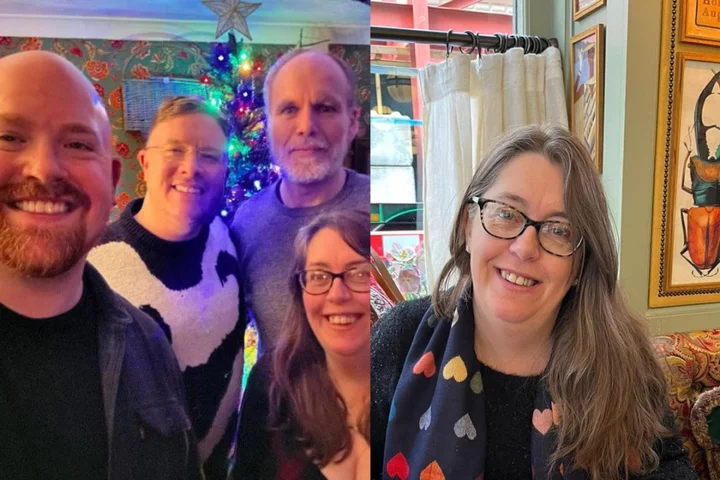
Woman, 50, to become a surrogate mother for same-sex couple
A woman is going to be a surrogate mother for the fourth time at the age of 50, even though the birth could be the ‘hardest yet’. Dawn Allen, a surrogate applications and agreement co-ordinator for Surrogacy UK, who lives in Derbyshire with her husband, Matthew Allen, 51, an archivist’s assistant, and has two of her own children, Alex, 17, and Sam, 27, offered to become a surrogate for the first time at the age of 36 after being inspired by a documentary over 20 years ago. Dawn has had three surrogate babies and three unsuccessful attempts, one of which ended in miscarriage, but all of her births have been “moments that will stick with (her) forever”. She was unsure if she was going to do it again until she met a friendly couple, Nicky Spence, 39, an operatic tenor and broadcaster, and Dylan Perez, 33, a classical pianist, through Surrogacy UK. Dawn makes sure her husband is on board with the surrogacies and bonds with the intended parents, as he is “as much a part of this as (she is)”, and has to “support” her through the pregnancy. She is not too worried about her age affecting her likelihood of becoming pregnant and has said she “wouldn’t have offered if I didn’t feel physically able” but is aware that the birth could be the hardest yet. “I know it’s going to be hard because I’m older now, but, at the end of the day, nine months out of my life is nothing when you’ve got a chance to give parents a lifetime of happiness,” Dawn said. Dawn was first drawn to becoming a surrogate more than 20 years ago, explaining: “I watched a documentary in the late 90s all about surrogacy and I thought, one day I’m going (to) do that. “I met Matthew, my husband, 23 years ago, and about a month into dating I said, ‘Oh, by the way, one day I’m going to be a surrogate’ – he looked at me like it was completely crazy.” Before Dawn became a surrogate, she had two sons of her own. She said: “About 18 months after having Alex, I brought the subject up about surrogacy, and we looked into it.” In 2008, Dawn joined Surrogacy UK, the UK’s leading not-for-profit surrogacy organisation, and soon began to use their online platform for surrogates and intended parents, as well as going to face-to-face socials, to see if she could find a couple she connected with. Dawn explained: “It’s just about meeting up with people and finding people that you connect with and have things in common with. “You then have a getting-to-know phase, where you hang out with the intended parents for about three months, and then you can make the decision if you’d like to proceed.” Dawn’s husband was very supportive of her decision, and she thinks it is important he connects with the intended parents too. She said: “Matthew is my main support – he’s as much a part of this as I am. “He’s the one that’s got to support me, as well as my children, so it’s important to me that they all get on with the people we decide to help.” A year after signing up to Surrogacy UK, in 2009, Dawn had an unsuccessful surrogacy as the embryos were of poor quality, but in 2012 she had a surrogate baby for a same-sex couple, using her own egg. An attempt to help a third couple in 2013 failed, but in 2015 she gave birth to a daughter for a same-sex couple – the same year, she began working for Surrogacy UK as a surrogate applications and agreement co-ordinator as she wanted to help other surrogates and intended parents. In 2017 Dawn miscarried a surrogate baby, but that couple has since had two children with another surrogate, and in 2021 she had a surrogate baby for another same-sex couple. Dawn explained how she has felt after giving birth: “I think, for me, it’s one of those moments that will stick with me forever. “You’re seeing people that you’ve become really good friends with, become parents, and you’re there in the moment they get to look at their child for the first time and hold them for the first time,” she said. “It was really, really emotional – there were lots of tears every time.” Dawn never felt it difficult to give the baby to the intended parents, explaining: “It was very clear in my head that baby wasn’t mine – it was the intended parents’ pregnancy, it was their baby. “I think you bond with your intended parents more than the baby.” Now, aged 50, Dawn is hoping to become a surrogate again, after meeting same-sex couple Nicky Spence and Dylan Perez on Surrogacy UK’s platform in November 2022. She explained: “I hadn’t made my mind up 100% if I was going to do it again, but I started chatting to Nicky and I asked my husband if he’d like to come along to a social online to meet them. “They were both lovely and my husband thought they were really nice too, so I made them the offer to start the official getting-to-know period the next day.” Nicky added: “We feel so lucky to have become friends with Dawn through Surrogacy UK and when she offered to help complete our family we couldn’t believe it. “We feel in very safe hands as she’s the kindest and most experienced surrogate you could wish for. ” Dawn did not have any doubts about her age affecting the likelihood of her getting pregnant. “So luckily, we’re using the same clinic that I used in my last journey, so they know my medical history,” she said. “Yes, I’m a lot older now, but after all the checks and tests they’ve done, they’re happy with me from a medical viewpoint. “I wouldn’t have offered if I didn’t feel physically able.” After doing some background digging on the future fathers, Dawn discovered that Nicky is an opera singer and broadcaster and his husband, Dylan, is a classical pianist. Dawn’s last surrogate baby was Luca, who was also for someone in the public eye – Aled Haydn Jones, the head of BBC Radio 1, and his partner, Emile Doxey. She said: “I have been teased about I only do celebrities now. But I had no idea that they were quite well known – I just knew Dylan played the piano and Nicky was a singer. “Nicky has performed with Shirley Bassey and lots of other people.” From November 2022 to February 2023, Dawn, her husband and the two intended parents have been getting to know each other. Dawn said: “We hang out all the time, they come and stay at our house or we meet up for meals, we’ve even been to Berlin with them and ended up in a bierkeller.” I think the pressure comes from, we want it as much as they do Dawn Allen In January 2023 they drew up an agreement regarding the pregnancy and the birth, and everyone was happy to proceed. Now, embryos are being created, using the intended parents’ family member’s eggs, and Dawn is hoping to get pregnant in the next few months. Dawn said: “I’m feeling really positive, there’s no pressure from them at all, but I do sometimes put a bit of pressure on myself because I really want to give them a baby. “I think the pressure comes from, we want it as much as they do.” Dawn thinks it is unlikely that she will have another surrogacy, saying: “I think this has probably got to be it with my age. “I think the only way I could do it was if we got pregnant really quickly this time around, and Nicky and Dylan wanted the baby to have a sibling more or less straight away.” Read More ‘You always feel like you’ve done something wrong’: Why UK surrogacy laws need a ‘real overhaul’ Children born via surrogacy or egg or sperm donation ‘should be told when young’ Tom Daley unveils photographs of newborn son Phoenix Rose: ‘He’s just perfect’ Charity boss speaks out over ‘traumatic’ encounter with royal aide Ukraine war’s heaviest fight rages in east - follow live
2023-05-19 19:50
